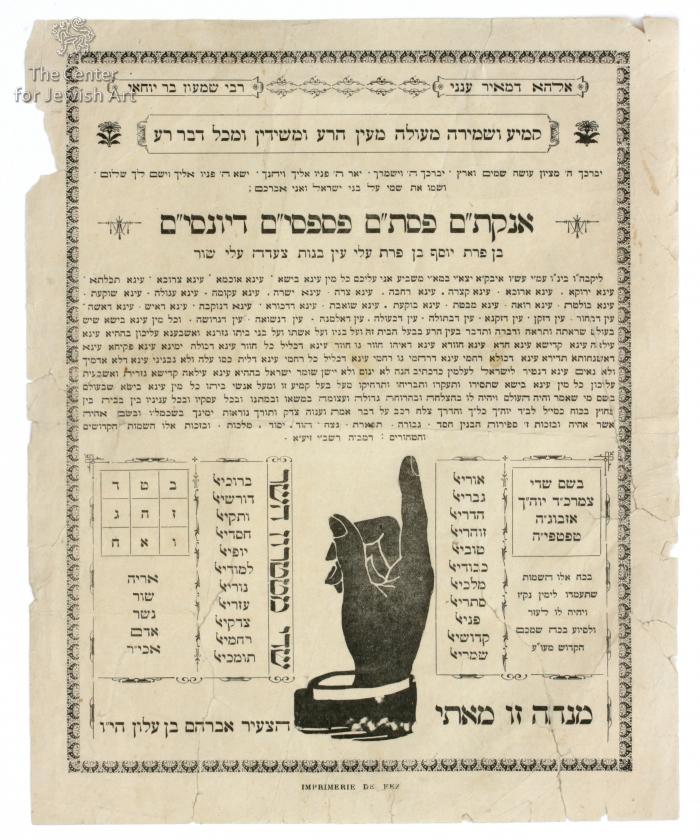Obj. ID: 54076 Amulet, Fes (Fez), circa 1925

sub-set tree:
H | Human Figure | Hand
A | Amuletic diagram | Magical square
|
The following description was prepared by William Gross:
From earliest times, man has tried to protect himself from misfortune by the use of objects that he considered holy or otherwise (e.g., magically) potent. Amulets and talismans are items generally worn around the neck or wrist, carried in a pocket or purse or hung on a wall. They are meant to protect or aid those who carried or wore them. The Hebrew word for amulet, kame‘a, has the root meaning "to bind". Jewish amulets are usually comprised of texts (either letters or graphic symbols) that are inscribed on some sort of material; some may also contain plant matter or precious stones. The texts of amulets usually include holy names that are believed to have the ability to affect reality, along with incantations summoning angels or other magical powers. For the most part, an amulet has a specific purpose: to ease childbirth, facilitate recovery from illness, improve one’s livelihood, and so on, but in the modern world many are also made for general protection.
There exist in the Gross family collection more amulets printed on paper from Morocco than from any other country. These were printed in several cities by various publishers, virtually all of them from the 20th century which was the time for the beginning of Hebrew printing in Morocco with few exceptions. Many of these contained elements in common, mostly featuring the hamsa and were often printed on colored paper.
An early amulet printed in Morocco. The amulet is one for general protection from the evil eye and all bad things. By the text and the design, as well as by the signature, it is quite clear that this amulet was composed and printed by Avraham Alloun. There are 11 other printed paper amulets attributed to Alon in the Gross Family collection, and almost identical in text. This amulet contains two unusual features: the image of the hand is quite different from other printed amulet hands in Morocco and the amulet was printed in Fez, whereas all the other Alloun amulets were printed in Casablanca where he lived.
Avraham Alloun was a Rabbi, paitan, and author of holy poetry and Ksidot (stories). Alloun made his living by publishing amulets, Kasidot, calendars and other single pages. It is told that he would take the publications from the printer on his bicycle and sell them on street corners in the Jewish area of Casablanca. There are 39 items published by Alloun in the Gross Family Collection. He made Aliyah to Israel and died there in Jerusalem. According to the decorations, this was printed by Yehudah Razon in Casablanca.
Publisher: Avraham Ben Alloun


